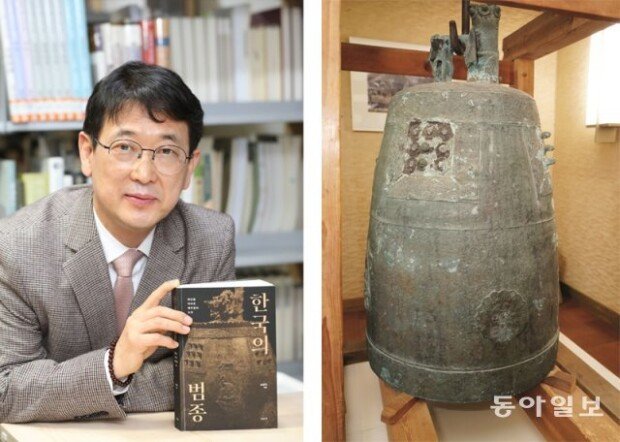Stories and sounds of 363 Buddhist bells are compiled
Stories and sounds of 363 Buddhist bells are compiled
Posted March. 31, 2022 07:52,
Updated March. 31, 2022 07:52

Choi Eung-cheon, a professor of art history at Dongguk University in South Korea, has recently published a book entitled “Korean Buddhist Temple Bells.” He has been studying Korean temple bells that are currently scattered all across the world for 33 years since 1989. The Dong-A Ilbo met Professor Choi at the Overseas Korean Cultural Heritage foundation in Mapo-gu, Seoul on Tuesday. “This book has archived a total of 363 Korean Buddhist temple bells that are currently scattered across the globe,” said Professor Choi. The book also carries the QR code of the sounds of 41 bells in an attempt to fully convey the Buddhist virtue embodied in Korea’s Buddhist temple bells.
Professor Choi personally located 48 Buddhist temple bells made in Korea, which are currently dispersed across Japan. He recollected the moment when he encountered the “Yeonji Temple Bell” that was made in 833 of the Unified Silla Dynasty, which is currently possessed by Jogu Shrine in Fukui, Japan, in 1995. The Yeonji Temple Bell had been owned by the Yeonji Temple in Jinju, South Gyeongsang Province in South Korea, but was ransacked by the Japanese invaders in 1592. The bell has been kept at the Jogu Shrine since then. The Japanese government designated the Yeonji Temple Bell as the national treasure in 1953. “I took 500 films, excited to survey every corner of the bell in detail,” said the professor. However, when the door of the storage was opened, my excitement quickly turned into disappointment.”
“The surface of the bell became rusty, and there were holes. No country neglects its national treasure. I could not do nothing,” said Professor Choi. He visited Japan several times and kept record of the Yeonji Temple Bell. In August 2018, he organized an academic symposium and urged the Japanese government to take preservation measures. The Japanese Cultural Heritage Research Institute has started taking preservation measures since May 2021.
The book carries a list that runs to 31 pages, categorizing 363 Korean bells by countries that currently possess and the period in which these bells are presumed to have been produced. “My students and I will keep adding new historical sources to the list,” said the professor. “This book marks the beginning of the study of Buddhist temple bells.”
always99@donga.com







